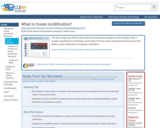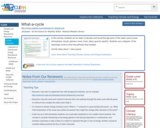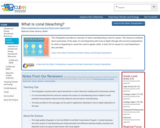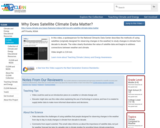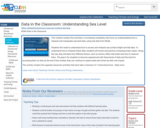
This module contains five activities, in increasing complexity, that focus on understanding how to interpret and manipulate sea level data, using real data from NOAA. Students first need to understand how to access and interpret sea surface height and tide data. To understand how to interpret these data, students will review and practice computing mean values. Along the way, they will learn how different factors, such as storms, affect tide levels and how to measure them. The goal is for students to become experienced with these kinds of data and the tools for accessing them so that, by the end of the module, they can continue to explore data sets driven by their own inquiry.
- Subject:
- Applied Science
- Career and Technical Education
- Environmental Science
- Environmental Studies
- Oceanography
- Physical Science
- Material Type:
- Activity/Lab
- Full Course
- Provider:
- CLEAN: Climate Literacy and Energy Awareness Network
- Provider Set:
- CLEAN: Climate Literacy and Energy Awareness Network
- Author:
- NOAA Data in the Classroom
- Date Added:
- 09/24/2018
